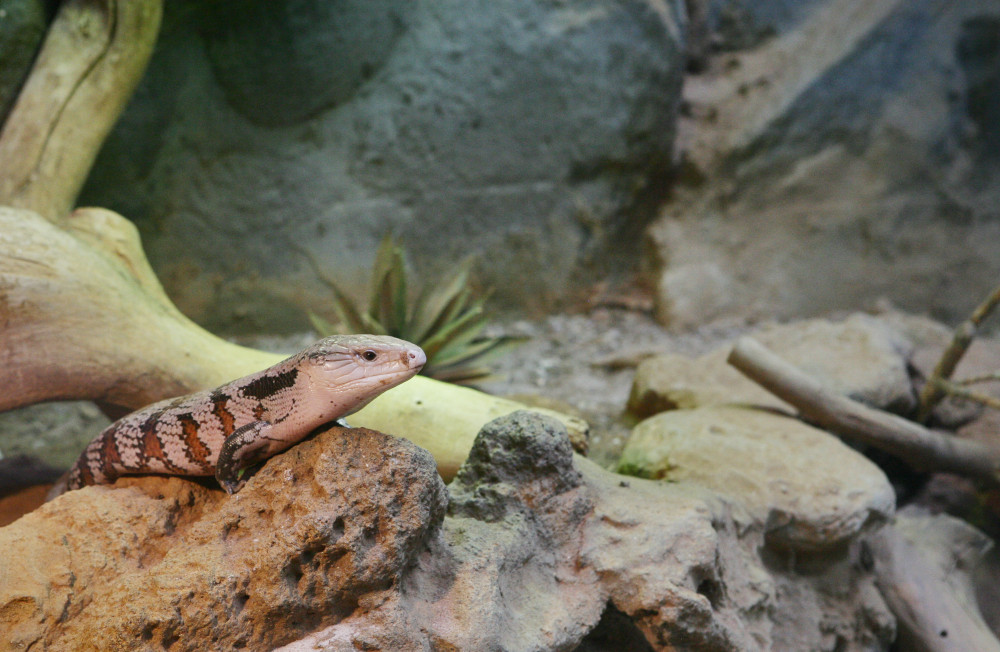
Are reptiles the right pet for me?
Reptiles are fascinating and wonderful animals, but they are not ‘low maintenance’ pets. There is a lot of work involved in keeping them healthy and you should carefully consider whether a reptile is the right pet for you. For information on what to think about before making that decision, please see this article.
It is important to remember that a reptile is a long-term commitment. Turtles can live for more than 30 years, pythons for more than 15 years and lizards such as Blue tongue skinks for 20 years.
Is this the right reptile for me?
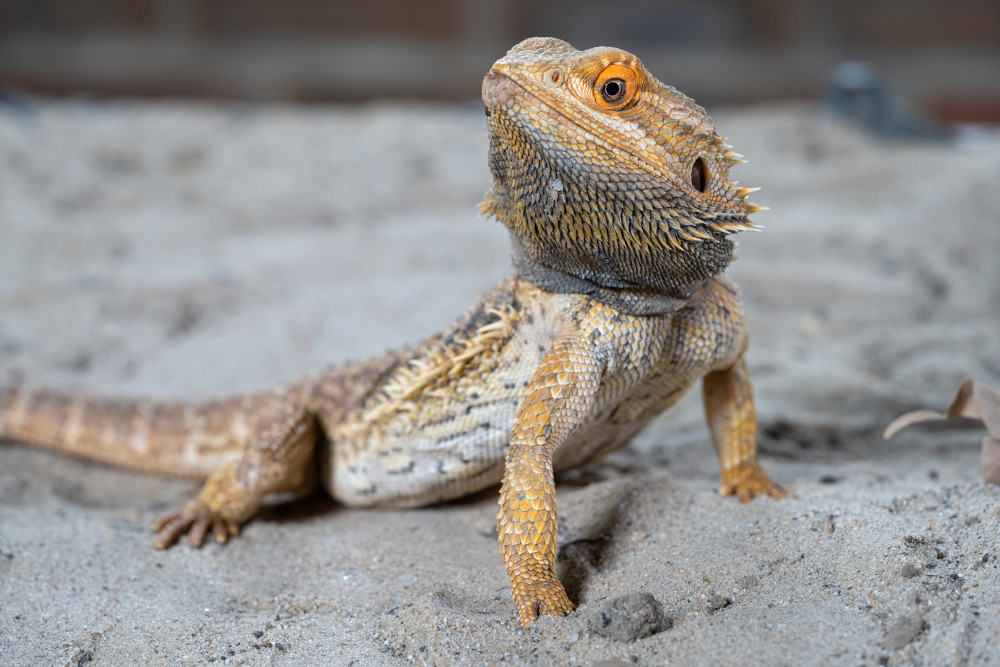
So, you’ve carefully considered it and decided that a reptile is the right pet for you, but which reptile? There are some species that are not suitable as pets and others that will not be ready to breed for years. Do these characteristics fit in with your plans? The key to knowing the answer is research. Read up on the reptiles you are interested in, ask other people about them, talk to reptile vets, reputable breeders, and rescue groups, visit online forums, and so on. Have a look at this article for more information.
Can my reptile make me sick?
Unfortunately, the answer is “Yes”. Most reptiles carry the bacteria Salmonella – the same bacteria that causes food poisoning. Although cross infection from reptiles to people is uncommon, it does occur. This article discusses how this disease is transmitted, and how to easily prevent it happening.
One reptile or two (or more)?
Grouping of animals can be socially advantageous for some species (e.g., Cunningham’s skink) but extremely disadvantageous to others. Animals in one enclosure should preferably be of the same species, but this depends on the species. In some species, the male is very dominant and may attack other males of the same species.
During transport, and their stay at the wholesaler, reptiles seem to accept very high densities, almost without fighting. It seems as though the tendency to create a territory and a hierarchy is overruled by the massive presence of other animals. If, however, the number of animals in a cage decreases, then gradually the demarcation of territories begins. This may lead to severe fighting and, in some species, males defending their territory may become stressed by the presence of other males, to an extent that the animals find no time to eat.
Combining several species may often lead to fighting or to suppression of one or more individuals. Animals that kill to collect food may suddenly attack cage mates if they are hungry.
It is vital, therefore, that you research the species you are interested in so that you will understand their needs and whether you can get/should get more than one reptile and/or house them together.
Do I need a licence to keep reptiles?
As Australia does not allow the import of reptiles from overseas, the only reptiles that can be kept here are native animals. And, as it is illegal to take them from the wild, you can only purchase them from certain licensed outlets. To control the trade in Australian reptiles and to protect wild reptiles, a licencing system exists in all states and territories that all reptile owners must abide by.
See here for more information.
What do I need to get ready for my reptile before I bring them home?
Impulse buying of reptiles can be a common outcome after coming into contact with one of these magnificent animals. Always try and resist this, as often you don’t have everything set up at home ready for a new companion, and this can lead to problems, stress, and even resentment. So, take your time to think things through before you buy a reptile – perhaps a deposit to secure them until you are ready, but try to make the transition from the place of purchase to your home a stress-free event.
Firstly, is this really the reptile you want? Are you in a good place where you can commit to them? This reptile will be with you for many years – do you have travel plans?
Next, do some research on where you can keep your reptile (particularly if you are renting or live in a crowded city). Are there council regulations or body corporate rules that may affect your ability to keep a pet like this? What about your family or housemates? Phobias of reptiles are quite common, and this is a question that needs to be asked.
If the answers to all these questions still gives you a positive vibe for buying your reptile, you will need to get everything ready before your new companion comes home. Things to think about:
- Where am I going to keep your reptile?
- Where am I going to purchase a suitably sized enclosure?
- What am I going to furnish the enclosure with (perches, platforms, water, and food dishes, toys, hides for security)?
- Is the house reptile-proof and escape-proof? Is it reptile-safe?
- What is the reptile currently eating, and what do you want to feed the reptile? You may need to transition your reptile to a new diet over a few weeks, so you may need plenty of both diets.
- Have I made an appointment with a vet experienced with reptiles so I can have my new reptile checked over?
Where can I keep my reptiles?
Reptiles can be kept indoors, outdoors, or both. Most reptiles are commonly kept in indoor cages and enclosures, although some are housed in either temporary or permanent outdoor enclosures.
See this article for more information on siting a reptile enclosure.
What sort of enclosure should I use for my reptile?
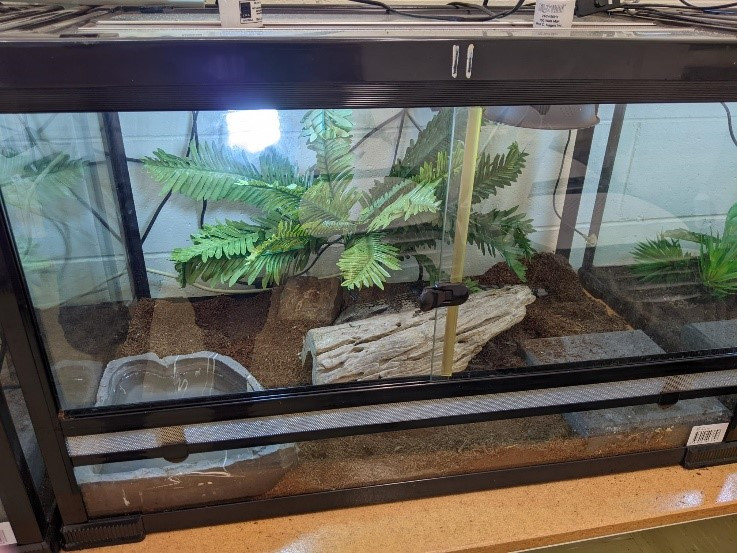
Lizards and snakes should be kept in a vivarium (dry aquarium) of appropriate size to allow them to display normal species-specific behaviour and thermoregulate (control their temperature) properly. It can be tempting for new reptile keepers to convert old aquariums into vivariums by fitting secure lids to the top, however the act of reaching in to pick up the reptile and clean the enclosure can become awkward and it much better and safer in the long run to have a vivarium which opens from the front, with hinged or sliding doors.
For more information on the type of enclosure you should use and how to set it up, see these articles:
- What sort of enclosure should I provide for my lizard or snake?
- Are reptiles cold-blooded?
- Why does my reptile need sunlight?
Turtles kept indoors should be housed in a large aquarium with a platform at the top that allows the turtle to dry out and warm up under a heat light. (Young turtles should be kept in small aquariums initially, until they are more mature.) As well as the requirements described above, maintaining and monitoring the quality of the water is vital to your turtle’s health, making turtles a high maintenance pet.
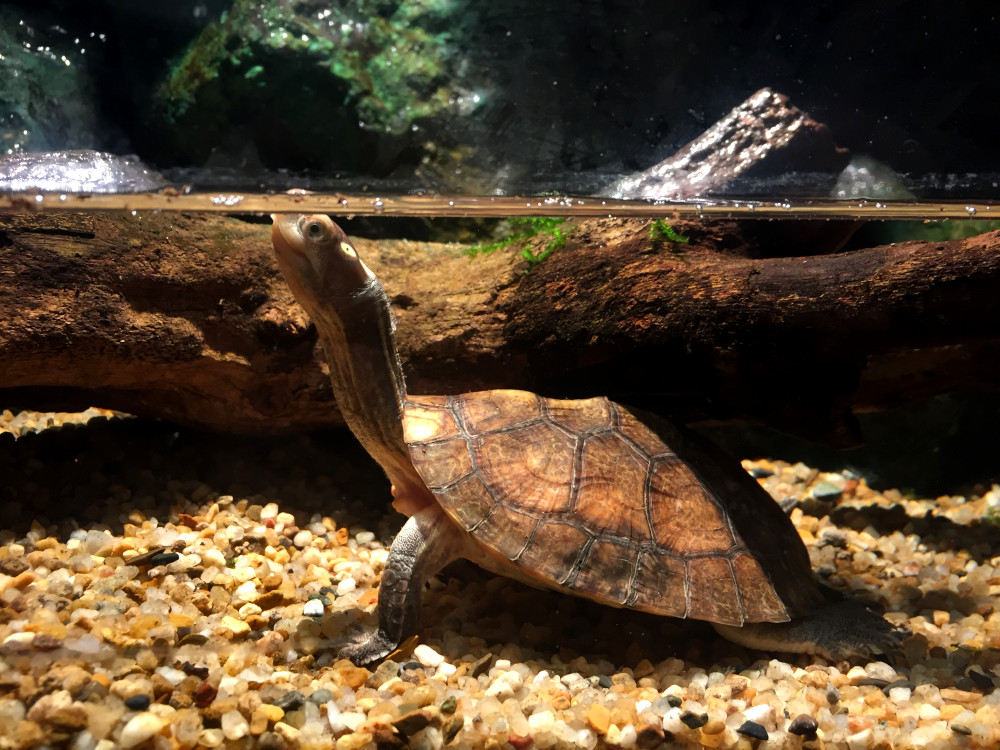
What am I going to feed my reptiles?
Feeding your reptile should be considered before you purchase your animal or any equipment. Are you okay with feeding live crickets to a lizard or thawing out frozen mice or rats to feed to a snake? It is essential that you are able to take care of all of your animal’s needs in captivity.
Reptiles do not eat as much as birds and mammals do and so are relatively cheaper to feed than conventional pets. All animals need to be provided with nutritious food in order to ensure proper growth and remain healthy. Make sure you source several reliable food suppliers so that you have a back-up plan if one supplier is out of food. See this article for more information on what you can feed to your reptiles.
Where can I obtain a reptile?
Once you have decided what kind of reptile you want to keep, have a home set up for the reptile and have received your licence you can start your quest to locate a suitable animal. Reptiles cannot be removed from the wild (or even from the back garden) and can only be obtained from another licenced keeper or licenced pet shop. If you buy a reptile interstate, you will need to have both a keeper’s licence and a licence/authority to move the reptile to your address.
If you do not know any keepers, you should join one of the reptile groups to meet other people with similar interests, to find out more about keeping, and to help you obtain your reptile. Most groups have facilities at meetings for members to advertise animals available or wanted, and some groups also provide this information in their newsletters. Some RSPCAs also have reptiles available for adoption.
Reptiles are also advertised for sale on websites and social media. Be wary of this means of purchase, as you may not have the opportunity to view the animal and premises prior to sale. Sadly, it is not unheard of for reptiles to be taken out of the wild and sold online by unlicensed and unscrupulous people.
There are pitfalls in selecting where you can get a reptile, and this article discusses some of the issues and planning that you need to consider before you buy a reptile.
What does a healthy reptile look like?
Before purchasing a reptile, you should also consider their health requirements. Not all veterinary clinics have reptile veterinarians and so you should find out first where you can take your animal in case they require treatment. It is also more difficult to spot health problems in reptiles than conventional pets – this is where your research into the proper care of your reptile is important.
A healthy reptile will have:
- A healthy weight, with no signs of malnutrition or obesity.
- A strong, regular posture for the species. They should not be struggling to stand. All their legs should be mobile and the reptile should have a regular gait (i.e., no limping or lameness).
- Alert and inquisitive behaviour.
- Smooth, even scales and skin. There should be no abnormal bumps in the skin or retained shed.
- No discharge in the eyes, nose, mouth, or ears.
- A clean vent and the reptile should be defecating and urinating regularly.
These signs suggest your reptile is healthy. Some species may have more specific signs of good health, so research is important to understand what these are for your chosen species. It is also advised that you take your reptile to a reptile vet as soon as you obtain your reptile and then annually, much like you would for a dog or cat, for a health check.
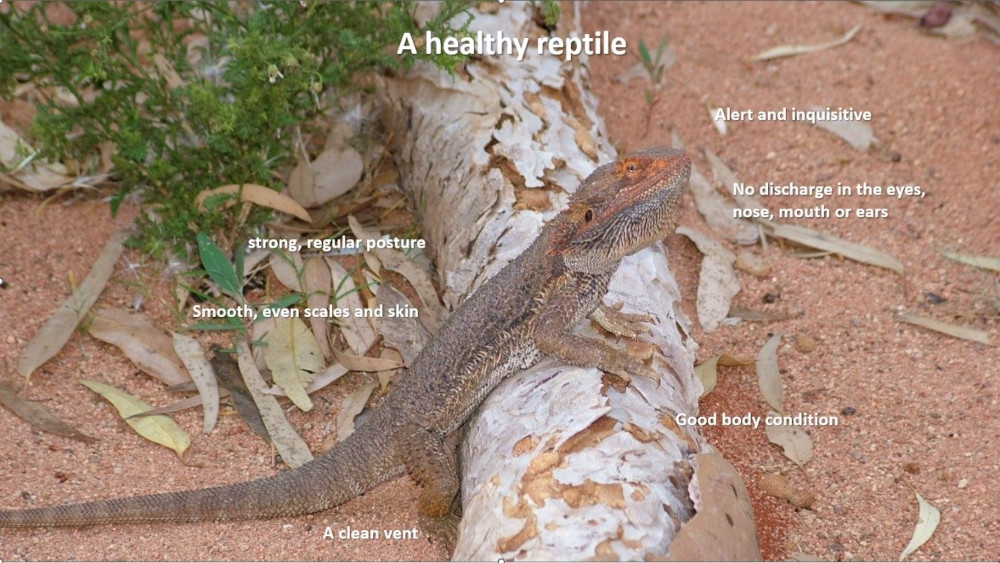
What does a sick reptile look like?
Reptiles are very limited in their ability to display signs of pain or illness. This means that, on first look, the reptile may appear healthy even if unwell. This article will tell you what to look for.
How will I keep my reptiles entertained, alert, and interested in their surroundings?
Environmental enrichment is intended to stimulate normal behaviours to promote the animal’s welfare, and to treat behavioural problems. It must be species-appropriate and compatible with the animals’ normal behaviour, physical attributes, and its existing environment. For many reptiles, this involves thermal enrichment (having a variety of hot/warm spots within an enclosure, shade, and shelter, etc.) and feeding enrichment (especially for active predators such as lizards). Other reptiles will interact well with objects to explore, basking opportunities and visual enrichment.
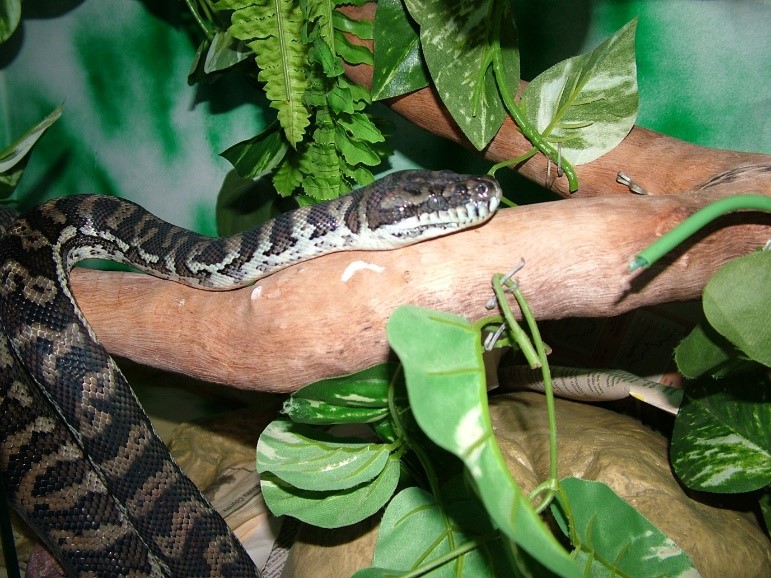
How will I keep my reptiles safe against household hazards?
Every year hundreds of reptiles suffer from health problems caused by their environment. Their human companions are often shocked (and horrified) when they discover that their reptile has been exposed to a hazard in their own home, often a hazard of which they were not aware. Reptiles, in many ways, are like toddlers – capable of finding new ways of hurting themselves as soon as we turn our backs on them for even a moment!
Have a look at this article for more information on household hazards that can hurt (or even kill) your reptile.
How do I handle my reptile?
No form of restraint should ever be taken lightly, as each restraint has some effect on the behaviour, life, or other activities of the reptile. Not only can your reptile hurt you, but you can seriously hurt them by incorrect or rough handling. This article discusses ways that you can handle your reptile without hurting them or yourself.
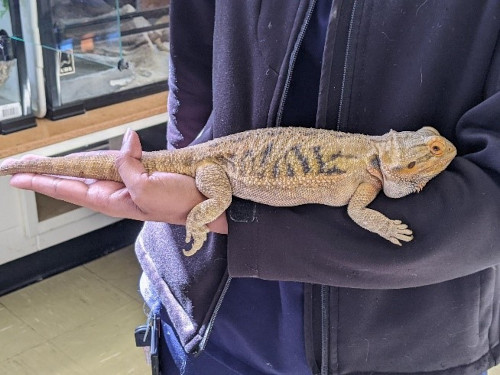
Preventative health care
No pet is low maintenance, but especially not reptiles. These suggestions may help you to keep your reptile happy and healthy for many years to come.
- Take your reptile to your veterinarian immediately after purchase, then once annually for examinations.
- Feed a healthy diet appropriate to the species of reptile you have.
- Provide clean, fresh uncontaminated drinking water and change frequently.
- Provide stimulating environmental enrichment by offering toys, social interaction, and foraging opportunities.
- Many reptiles enjoy bathing. Try providing a warm water bath, or gently spraying with clean warm water daily if possible. Don’t overdo it though – high humidity can cause skin problems.
- Avoid spraying the house, enclosure, or reptile with insecticides and other poisons.
Parasite control
Intestinal parasites can be a serious problem for all pet reptiles, as they can become infected through contact with other reptiles, their droppings, or contaminated objects and substrate. A single reptile is not immune from infection, as they can re-infect themselves if an enclosure is not kept clean.
Getting worming right can mean that you can save a lot of heartbreak when a loved companion or a valuable breeder is lost to something as simple as worms. You can also save a lot of money by not wasting money on worm medications that are not needed.
So, how do you decide how often to worm your reptiles, and what to use? This article discusses these issues.
Reference
Carmel B, Johnson R (2014) A guide to health and disease in reptiles & amphibians. Reptile Publications, Burleigh
